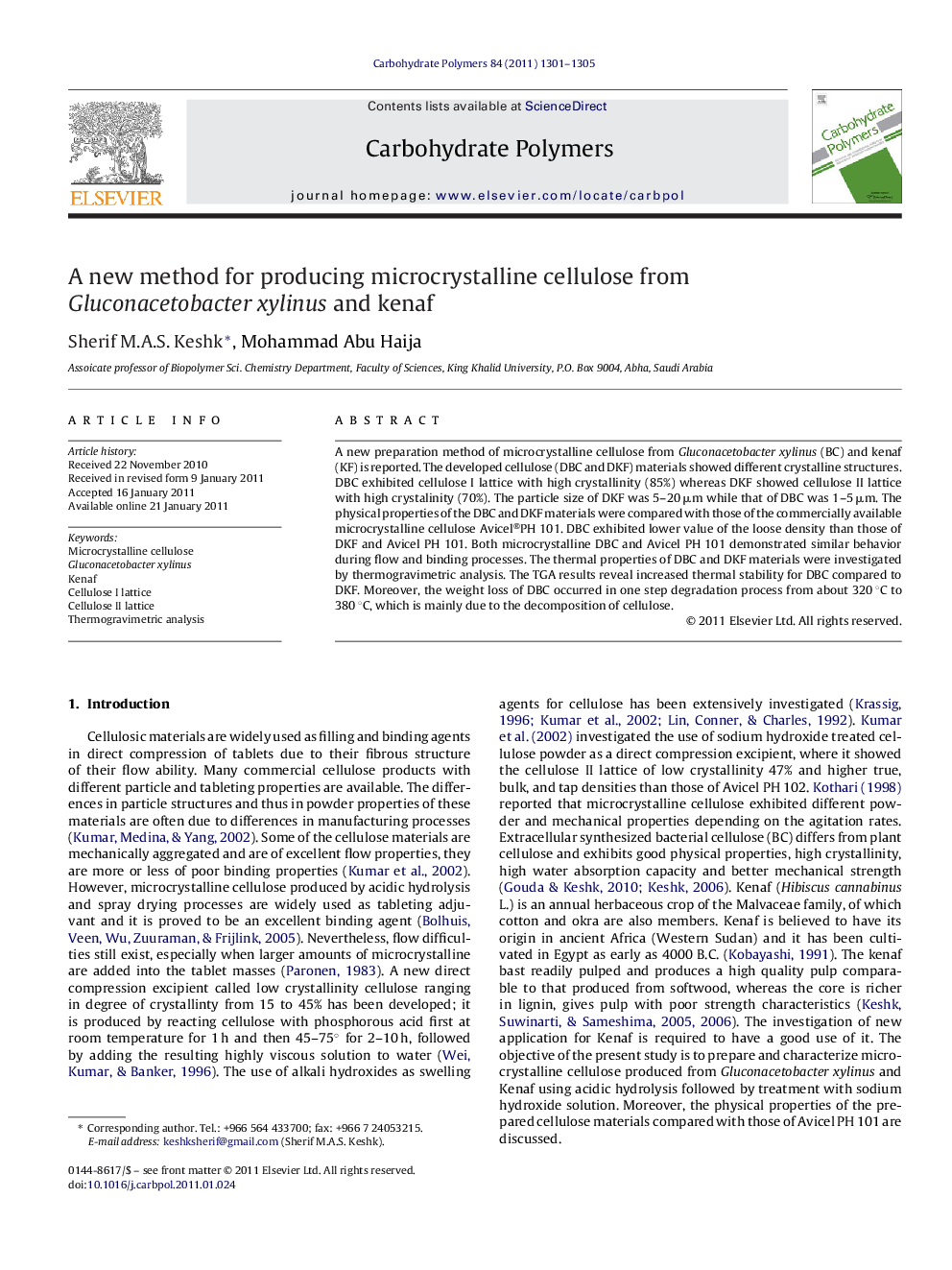| Article ID | Journal | Published Year | Pages | File Type |
|---|---|---|---|---|
| 10603078 | Carbohydrate Polymers | 2011 | 5 Pages |
Abstract
A new preparation method of microcrystalline cellulose from Gluconacetobacter xylinus (BC) and kenaf (KF) is reported. The developed cellulose (DBC and DKF) materials showed different crystalline structures. DBC exhibited cellulose I lattice with high crystallinity (85%) whereas DKF showed cellulose II lattice with high crystalinity (70%). The particle size of DKF was 5-20 μm while that of DBC was 1-5 μm. The physical properties of the DBC and DKF materials were compared with those of the commercially available microcrystalline cellulose Avicel®PH 101. DBC exhibited lower value of the loose density than those of DKF and Avicel PH 101. Both microcrystalline DBC and Avicel PH 101 demonstrated similar behavior during flow and binding processes. The thermal properties of DBC and DKF materials were investigated by thermogravimetric analysis. The TGA results reveal increased thermal stability for DBC compared to DKF. Moreover, the weight loss of DBC occurred in one step degradation process from about 320 °C to 380 °C, which is mainly due to the decomposition of cellulose.
Related Topics
Physical Sciences and Engineering
Chemistry
Organic Chemistry
Authors
Sherif M.A.S. Keshk, Mohammad Abu Haija,
